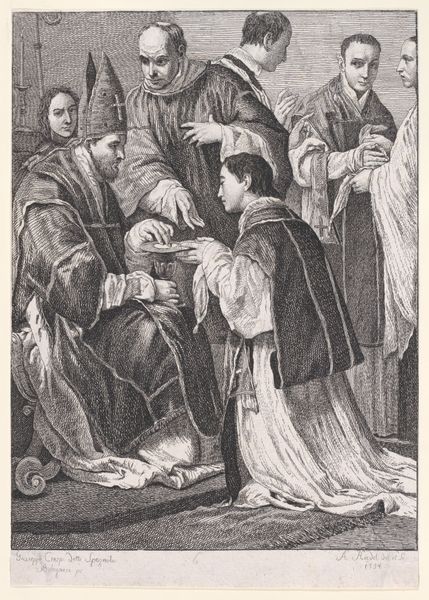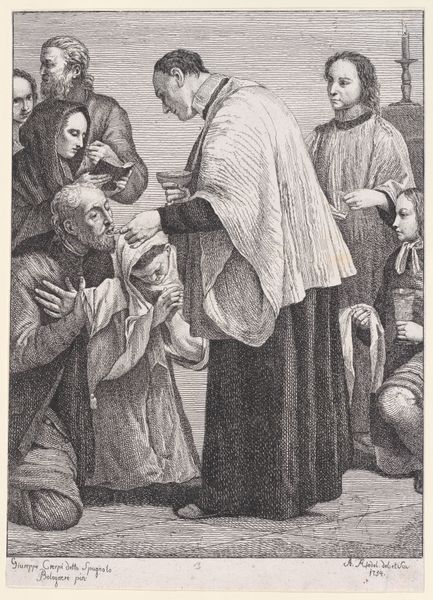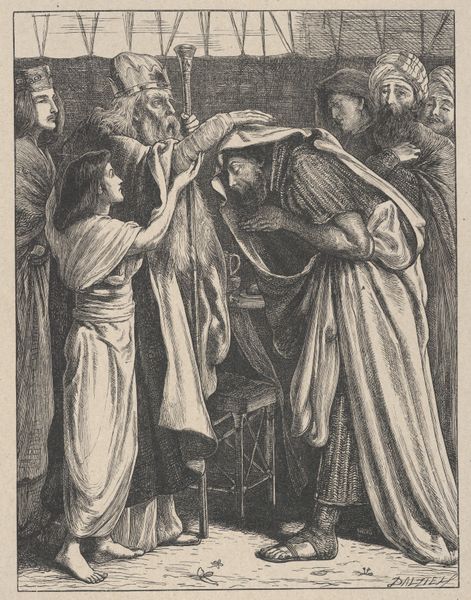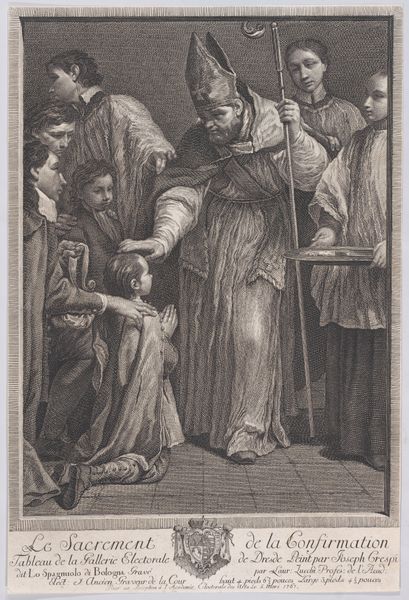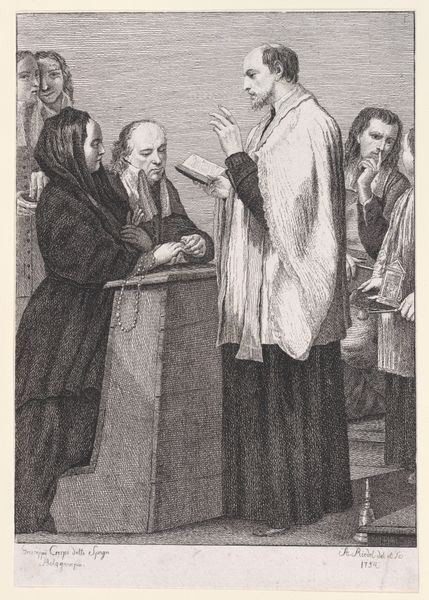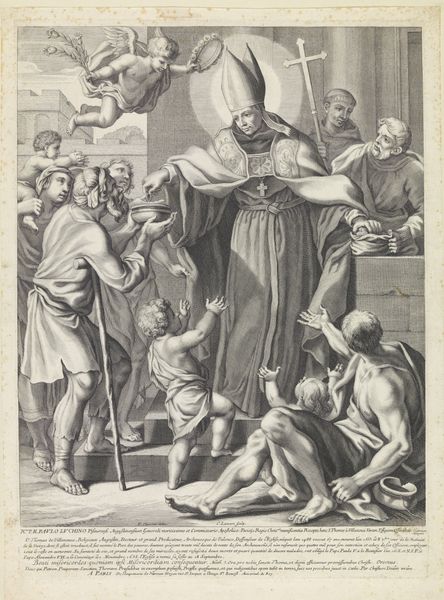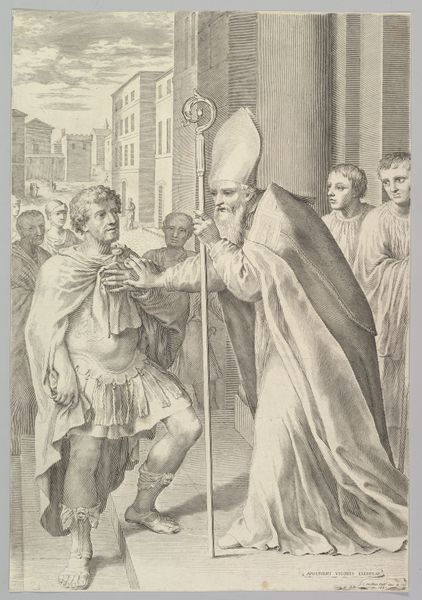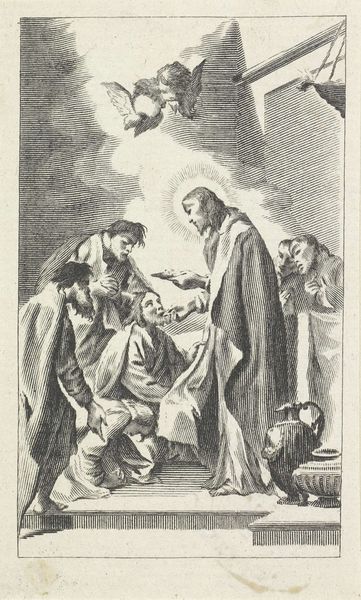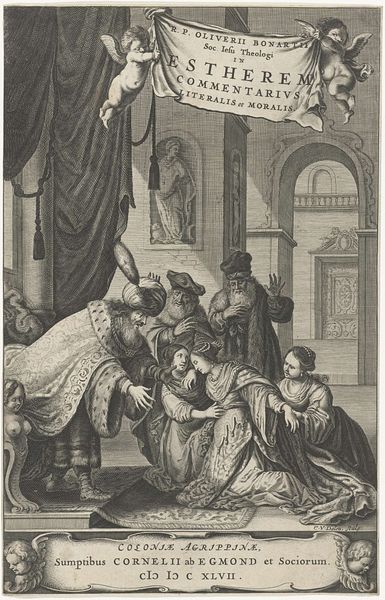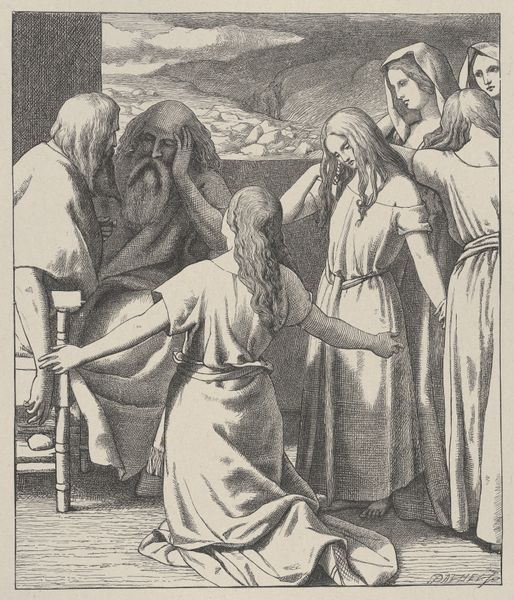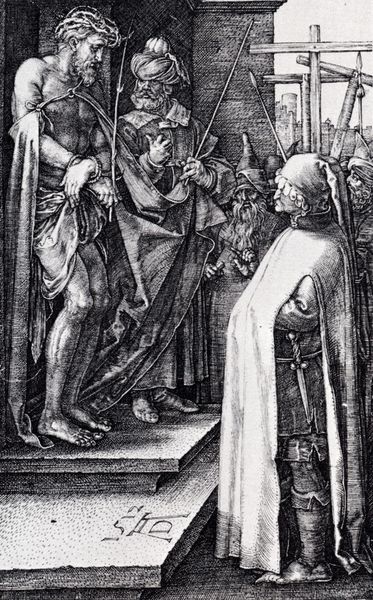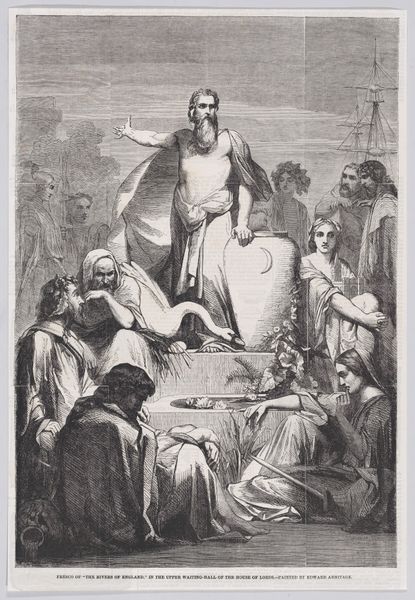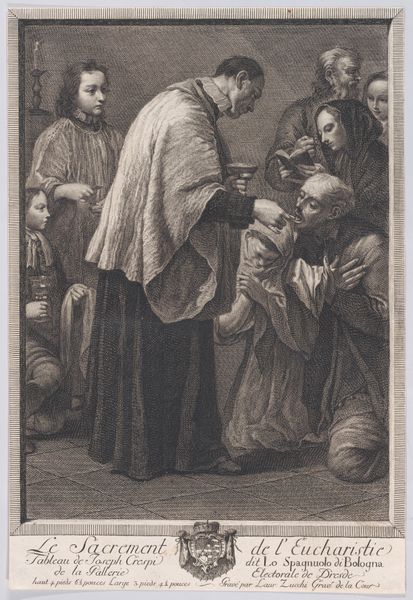
drawing, print, engraving
#
drawing
#
baroque
# print
#
figuration
#
line
#
genre-painting
#
history-painting
#
engraving
Dimensions: Sheet: 11 7/16 × 8 1/4 in. (29 × 20.9 cm)
Copyright: Public Domain
Editor: This engraving from 1754, called "Confirmation, from 'The Seven Sacraments'", by Johann Anton Riedel, has a very formal feeling. It captures what appears to be a confirmation ceremony, full of serious expressions. What's your read on the significance of depicting religious rituals like this in art? Curator: Well, images like this served a powerful public role. In the 18th century, art wasn't just decoration; it reinforced social hierarchies and religious doctrine. Prints, particularly, democratized imagery. These sacraments, cornerstones of Catholic life, were presented in a way meant to edify and instruct. Note the careful arrangement—who do you think benefits from it? Editor: The Church, I guess. By portraying this solemn event, it reminds everyone of its authority and the importance of adhering to religious customs. Is it always straightforward? Were there more layered implications? Curator: Rarely is it ever straightforward. Beyond religious messaging, such images could function as social records, capturing evolving attitudes towards children and religious education. Think about the patronage – who commissioned and disseminated such prints, and how might their interests shaped the final product? Editor: So, looking closer isn't just about religious devotion; it's also about power, society, and maybe even early forms of mass media. Curator: Exactly. Consider how shifts in patronage – from church to wealthy individuals, for example – influence artistic styles and thematic choices, ultimately affecting art’s relationship to the public. Editor: This piece definitely gave me a new angle on how to read artworks beyond their surface. It is so much more than an innocent religious image. Curator: Indeed. Art like this becomes a mirror reflecting not just faith but the very structure of society itself.
Comments
No comments
Be the first to comment and join the conversation on the ultimate creative platform.
